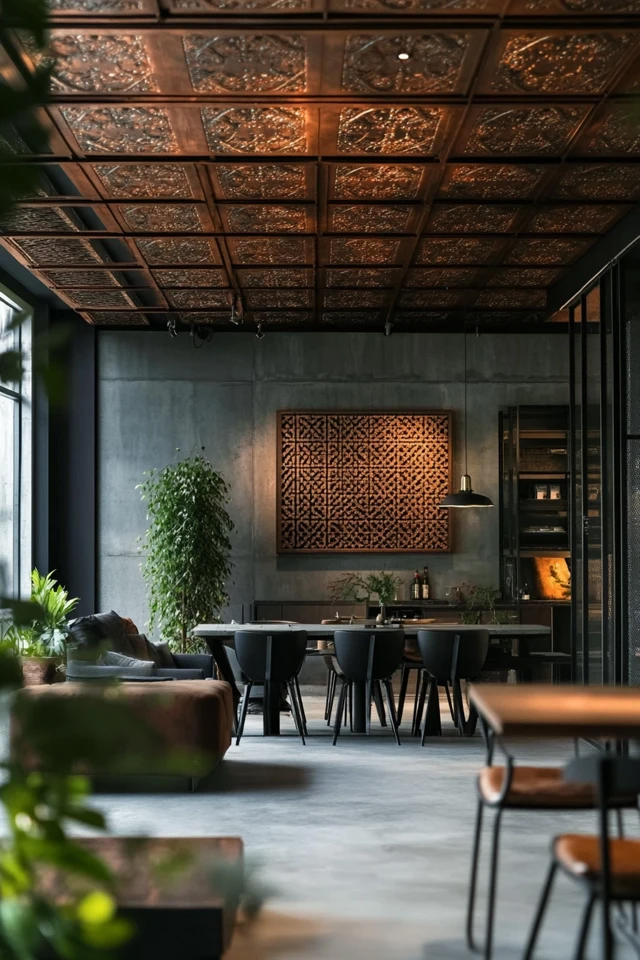Introduction
When you think about industrial design, the ceiling might not be the first thing that comes to mind. But trust me, it should be! Ceilings are often called the “fifth wall,” and in industrial interiors, they offer endless opportunities to make a bold, creative statement. I vividly remember working on a loft project where the client was adamant about keeping the original exposed beams and ducts in the living room. With a little paint and strategic lighting, that ceiling became the star of the show, transforming the space into a dynamic, industrial masterpiece.
Industrial ceilings are all about celebrating raw materials, structural elements, and creative finishes. Whether you’re working with high ceilings in a loft or a standard-height room, these ideas will help you make the most of your space. Ready to look up and be inspired? Let’s dive in!
1. Exposed Ductwork
Why It Works
Exposed ductwork is the hallmark of industrial design, bringing an authentic and raw feel to any space.
How to Style It
- Leave the ducts in their natural metallic finish for a classic industrial vibe.
- Paint them black for a bold, modern look or white to blend with the ceiling for subtle texture.
- Pair with pendant lights or track lighting to highlight the ceiling’s architectural features.
2. Metal Ceiling Tiles
Why It Works
Metal ceiling tiles add texture and shine, creating a striking focal point that draws the eye upward.
How to Style It
- Use tin or pressed metal tiles in silver, gold, or copper for a vintage-industrial aesthetic.
- Pair with reclaimed wood beams or brick walls for a rich, layered look.
- Opt for matte black tiles in modern spaces to emphasize a sleek, edgy vibe.
3. Exposed Beams
Why It Works
Exposed beams bring warmth and structure, creating a balance between industrial ruggedness and cozy charm.
How to Style It
- Highlight wood beams with a clear varnish or stain for a natural finish.
- Paint metal beams in matte black or dark gray to emphasize the industrial aesthetic.
- Add Edison bulb string lights or pendant lights to enhance the visual impact of the beams.
4. Concrete Ceilings
Why It Works
Concrete ceilings exude minimalism and modernity, offering a sleek and raw foundation for industrial interiors.
How to Style It
- Keep the concrete unfinished for a natural, textured look.
- Pair with polished concrete floors and metal furniture for a cohesive design.
- Soften the rawness with warm lighting and soft textiles like rugs and cushions.
5. Painted Pipes
Why It Works
Exposed pipes are functional and visually striking, and painting them adds a creative twist to the industrial aesthetic.
How to Style It
- Paint pipes in bold colors like red or blue for a pop of personality.
- Use metallic paints like copper or bronze for a more polished look.
- Pair painted pipes with neutral walls and furniture to let the ceiling shine.
6. Wood Paneling
Why It Works
Wood paneling adds warmth and texture, creating a rustic-industrial vibe that feels both modern and inviting.
How to Style It
- Use reclaimed or distressed wood for an authentic, weathered look.
- Combine wood paneling with metal accents or fixtures for contrast.
- Add recessed lighting or LED strips to highlight the natural grain of the wood.
7. Industrial Chandeliers
Why It Works
Statement chandeliers draw attention to the ceiling while adding a touch of elegance to industrial spaces.
How to Style It
- Choose chandeliers with metal frames and Edison bulbs for a vintage-industrial look.
- Install oversized fixtures in open-concept spaces to create a bold focal point.
- Pair with exposed ductwork or beams for a cohesive ceiling design.
8. Perforated Metal Panels
Why It Works
Perforated metal panels add texture and intrigue while maintaining the industrial aesthetic.
How to Style It
- Use panels as a full ceiling treatment or as decorative insets in specific areas.
- Pair with matte black or metallic finishes for a cohesive industrial vibe.
- Add backlighting behind perforated panels for a dramatic effect.
9. High-Gloss Finishes
Why It Works
High-gloss ceilings reflect light and make spaces feel larger while adding a polished, modern edge.
How to Style It
- Use glossy black paint for a bold, dramatic look in dining rooms or living areas.
- Opt for white or neutral tones to reflect natural light in smaller spaces.
- Pair with metal furniture and bold artwork to complete the industrial aesthetic.
10. Exposed Grid Ceilings
Why It Works
Grid ceilings emphasize structure and symmetry, fitting perfectly within the industrial design ethos.
How to Style It
- Paint the grid in black or gray for a sleek, modern look.
- Pair with drop-in tiles made of metal, wood, or textured materials.
- Use suspended pendant lights within the grid for a cohesive design.
Picture Gallery
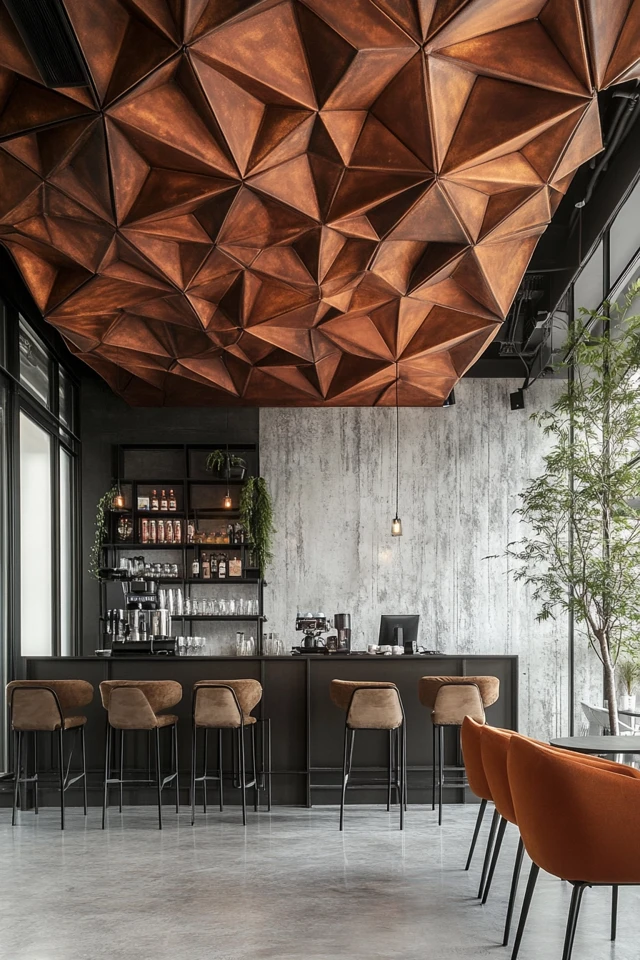
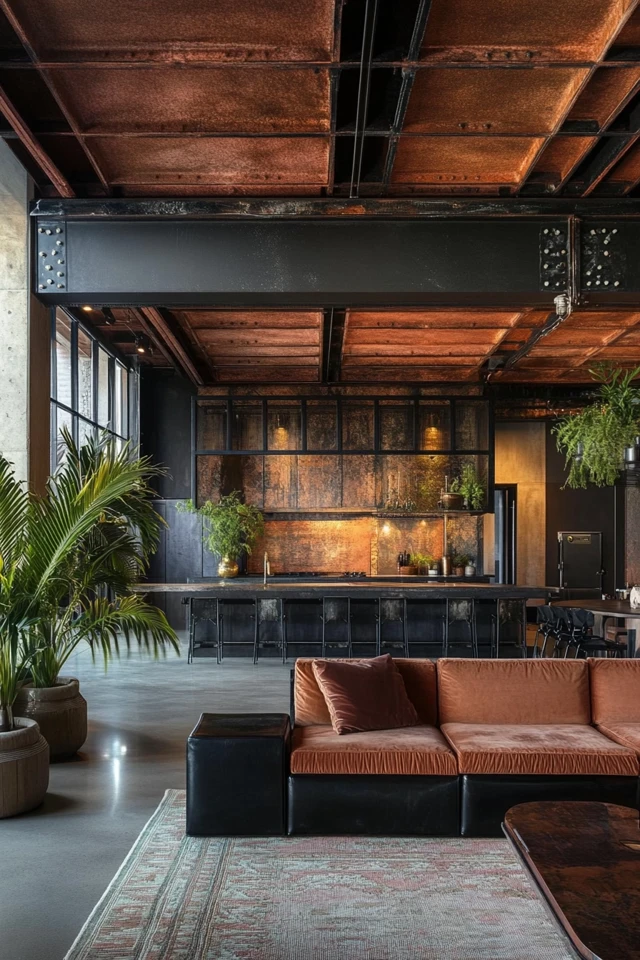
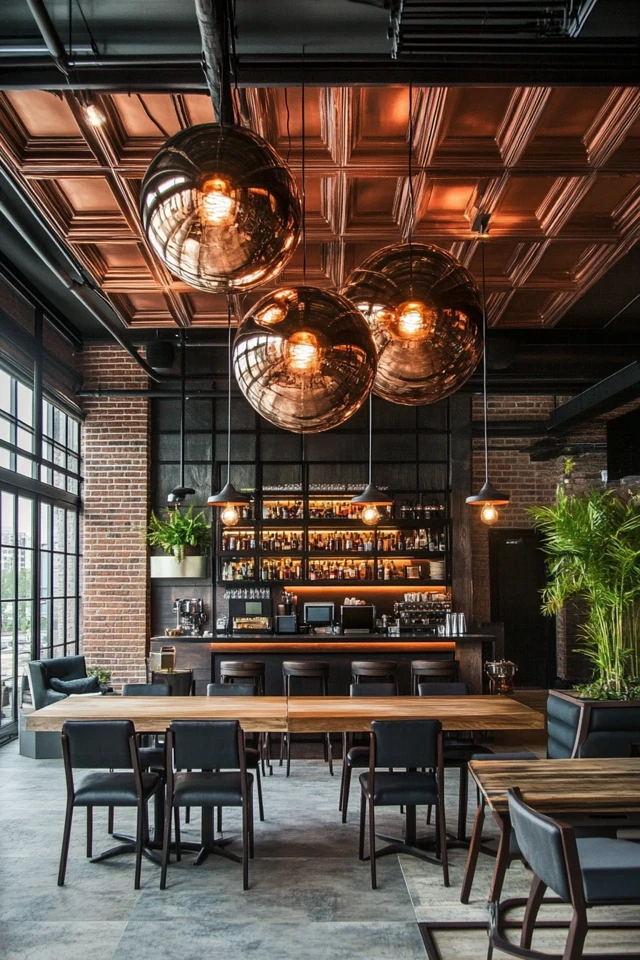



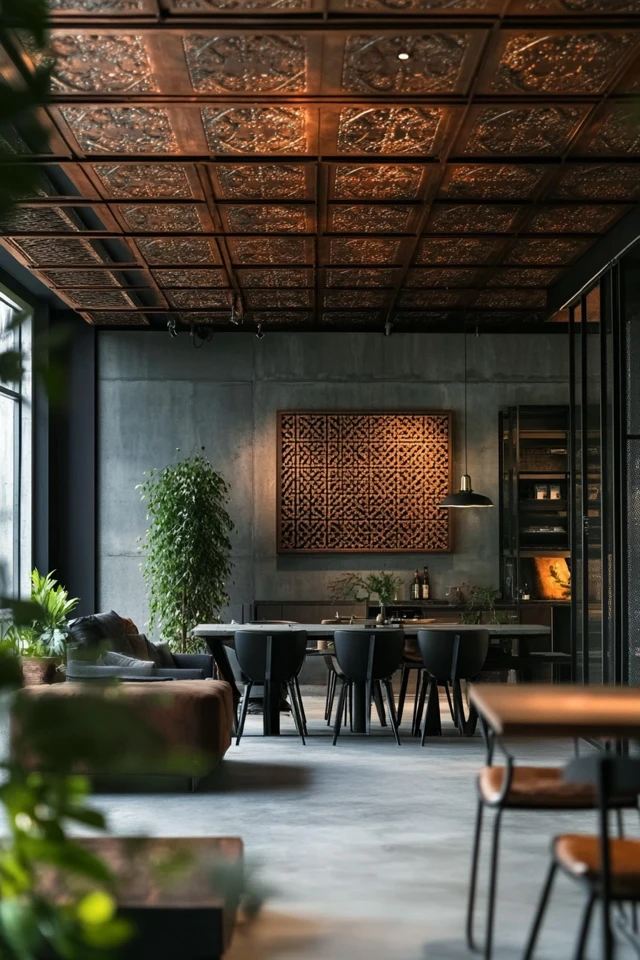

Conclusion
An industrial ceiling is more than just a functional element—it’s a chance to infuse your space with character, creativity, and architectural charm. Whether you’re highlighting exposed beams, painting pipes, or installing metal tiles, the ceiling can serve as a bold statement piece that ties your entire industrial interior together.
What I love most about industrial ceilings is their versatility. They can be raw and rugged or sleek and polished, depending on your personal style. Don’t be afraid to mix textures, play with lighting, or incorporate unexpected materials to create a ceiling that’s as stylish as it is functional.
FAQ
Can industrial ceiling designs work in small spaces?
Yes! Use lighter colors and reflective finishes like high-gloss paint or metal tiles to make the space feel larger.
How do I incorporate lighting into industrial ceilings?
Pendant lights, Edison bulbs, and LED strips work well with industrial ceilings. Use them to highlight key architectural elements like beams or ductwork.
Are industrial ceilings expensive to create?
Not necessarily! Exposed ductwork and concrete ceilings can save on finishing costs, while decorative elements like paint or lighting can be added affordably.
What colors work best for industrial ceilings?
Stick to neutral tones like black, gray, white, and metallic finishes. Bold accent colors can be used sparingly to create focal points.
How do I balance an industrial ceiling with the rest of the decor?
Incorporate soft elements like rugs, cushions, and warm lighting to balance the ruggedness of the ceiling and create a cozy, inviting space.

